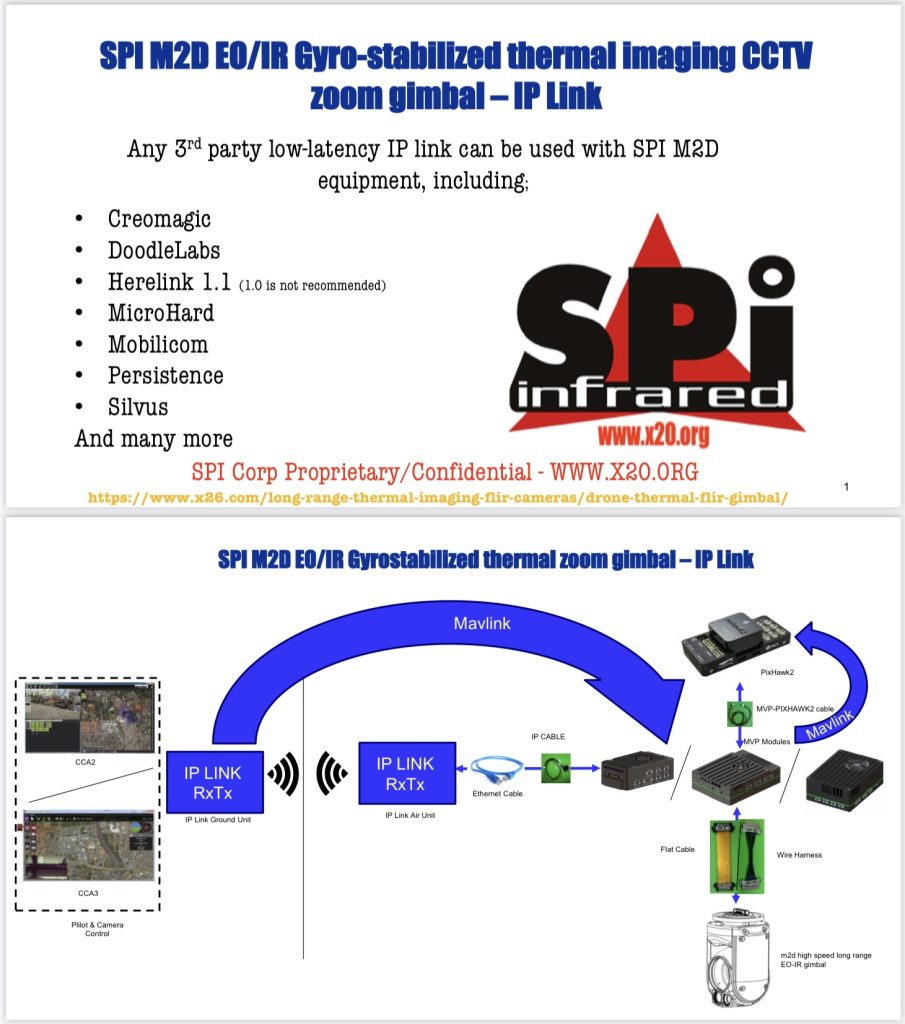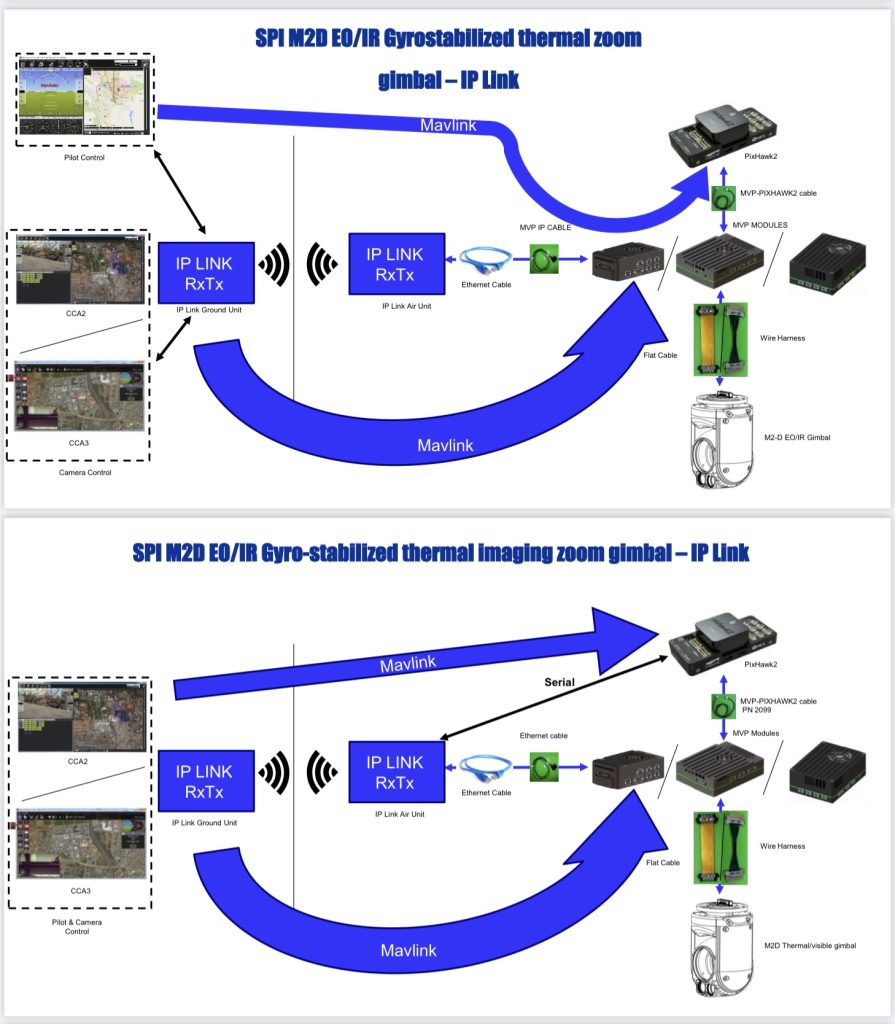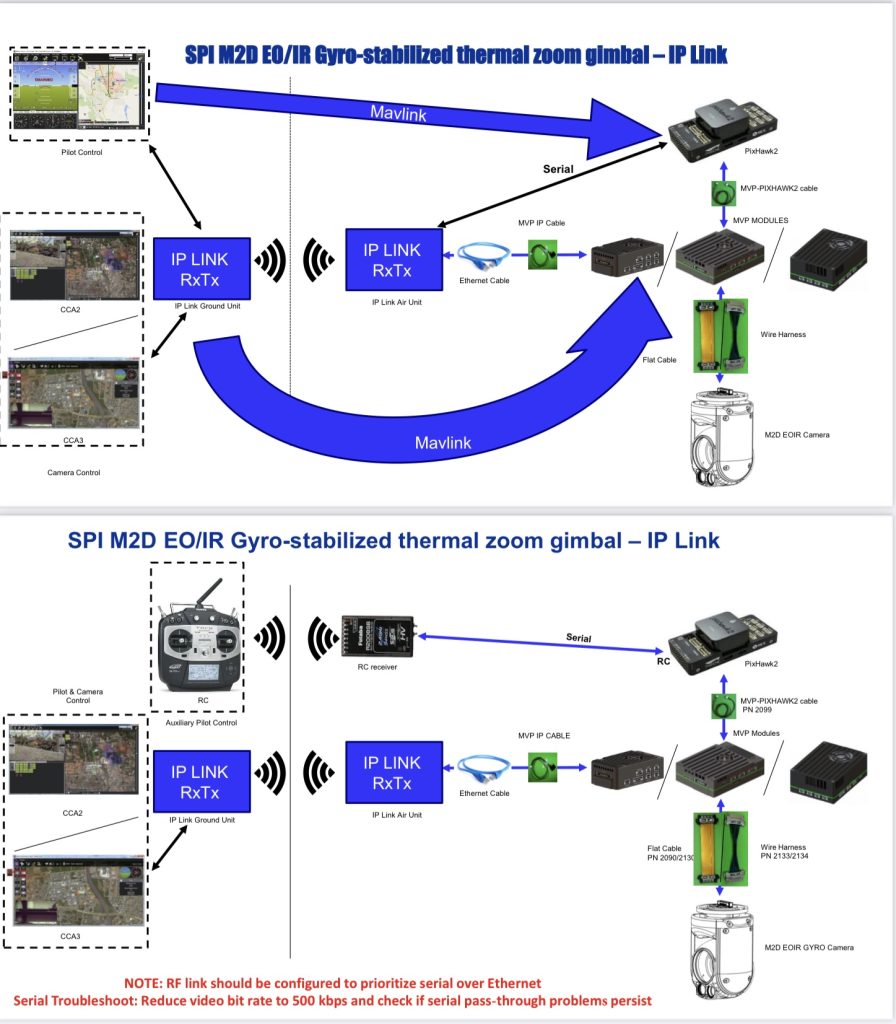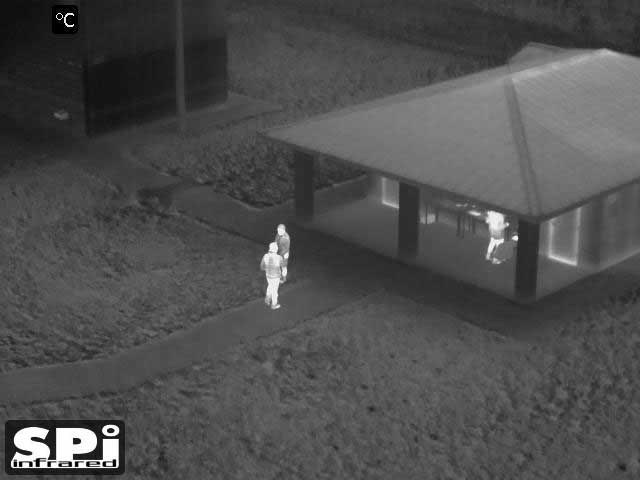Overview
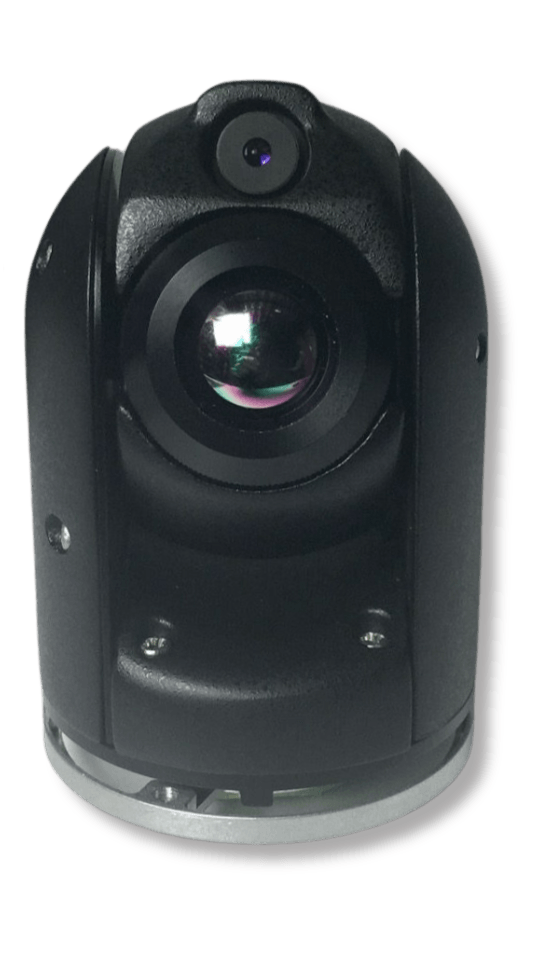
The M2D Micro Gimbal, recognized as the world’s smallest and lightest gyro-stabilized dual EO/IR thermal gimbal, offers advanced imaging capabilities for Intelligence, Surveillance, and Reconnaissance (ISR) applications. The EO-IR payload offers long range visible low light zoom color camera capabilities along side a hand picked ultra sensitive 25mK LWIR thermal IR imaging FLIR camera with exceptional Detection, Recognition and Identification (DRI) capabilities Rock solid stabilization and reliability are a few essential features of the M2D family of high speed, high performance Drone thermal imaging day and night vision PTZ gimbals

Technical Specifications:
- Pan Tilt: Full Roll 360° Pan Full / Tilt Pitch -45° to +135°
- System: Solid state BSI CMOS/LWIR UFPA
- Zoom: Continuous Visual EO and Thermal IR
- Stabilization: UltraStab Multi-Axis/Multi-Stage rock-solid Gyro Stabilization
- Advanced Target Tracking: Utilizes a highly accurate processing module for ground target tracking
- Digital Video Recording: Allows high-quality digital video recording onboard the platform
- IP Based Video Compression: Converts the system to IP-based format for easy integration into IP network platforms
The Worlds smallest, lightest EOIR drone thermal imaging gyrostabilized gimbal payload turret ball with advanced
Features for a host off custom integration of manned and unmanned airborne, land and marine platforms
With a full roll of 360° pan and a tilt pitch range of -45° to +135°, the M2D Micro Gimbal features a solid-state BSI CMOS/LWIR UFPA system. It offers continuous visual EO and thermal IR zoom, along with rock-solid gyro stabilization through its UltraStab Multi-Axis/Multi-Stage technology.

The gimbal utilizes highly accurate processing for advanced ground target tracking and allows high-quality digital video recording onboard. Moreover, it can be easily integrated into IP network platforms using IP-based video compression.
Camera Specifications:
- Ultra-sensitive custom 640×512 or HD 1280×1024 long range zoom thermal imaging IR channel
- HD BSI CMOS color long range 82x visible EO zoom channel
- Multiple payload and AI module options
- Artificial Intelligence start Tracking and enhancement algorithms
- Smooth instant Continuous zoom on both EO and IR channels
- Ultra rugged, reliable stabilized systems
- Low cost complete EOIR gyrostabilized day/night 24/7 drone, uav, uas, ugv and usv solution
- ideal for integrators, contractors, LE, MIL and industrial aerial drone operators
- Multi-axis rock-steady jitter-free Gyro Stabilization Turret
- Ultra-lightweight micro-mini 112 gram payloads
- Available in LWIR and MWIR cooled thermal imaging flir camera channels
- Ultra sensitive 25Mk Thermal imaging hand picked cameras
- 0.5 MRAD Lasers
- 360 degree rotation
- Power Requirement: 9-32 VDC, Power Consumption: <9W
- Temperature: -20°C to +60°C
- Diameter: 53mm [2.099″], Height: 78mm [3.07″] (depending on version)
Continued
The gimbal incorporates an ultra-sensitive custom 640×512 zoom thermal imaging IR channel and an HD BSI CMOS color visible zoom EO channel.

It also utilizes artificial intelligence for start tracking and enhancement algorithms, providing smooth and instant continuous zoom on both EO and IR channels. The multi-axis rock-steady jitter-free gyro stabilization turret ensures precise imaging. Additionally, the gimbal weighs only 159 grams and offers options for a visible or infrared 0.5 MRAD laser.

APPLICATIONS
The M2D Micro Gimbal finds applications in various sectors, including:
- Reconnaissance and Surveillance: Used on advanced UAV systems, the gimbal provides real-time thermal imagery for monitoring enemy positions and gathering intelligence.
- Border Security: Integrated with drones or multi-copters, the gimbal enhances border patrol and surveillance, boosting security measures.
- Industrial Surveillance: By enabling the identification of anomalies, hotspots, or leaks through thermal imaging, the gimbal aids in maintenance and prevents breakdowns in industrial settings.
- Search and Rescue: The gimbal’s thermal imaging capabilities help locate missing persons or survivors by detecting body heat signatures, thereby improving search and rescue operations.
M2D MINI UAV UAS DRONE THERMAL FLIR GIMBAL PAYLOAD:
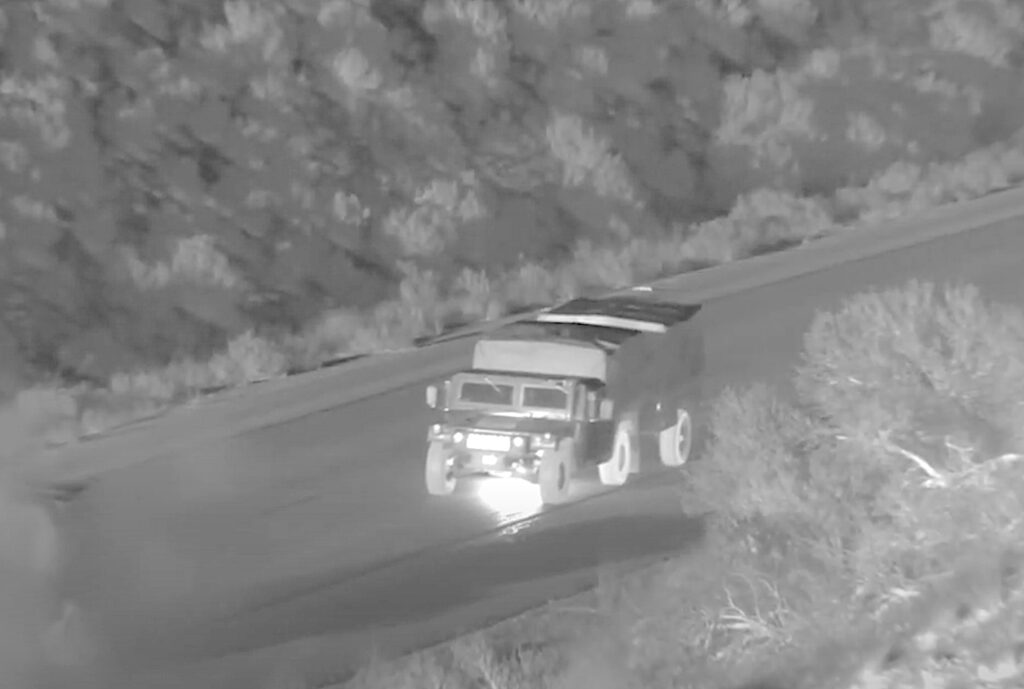
The M2D Mini UAV UAS drone thermal FLIR gimbal payload stands out as one of the market’s smallest stabilized EOIR LWIR uncooled gimbals. Advanced high clarity sensors and optics offer long range extreme distance DRI imaging for humans, vehicles and objects/targets of interest.
It offers a range of capabilities suitable for unmanned aerial systems (UAS) and drones. Weighing only 160 grams, the thermal gimbal’s weight is comparable to that of a billiard ball.
The M2D family of EO/IR gimbals are suitable for Manned and unmanned Drones, USV, UGV, UAS, CUAS, UAV USV land, mobile and marine platforms. Ideal for custom engineering and a with a plethora of plug and play out of the box features assure easy integration.

EO IR SENSORS FOR UAVS:
EO-IR sensors and camera systems prove highly compatible with a wide spectrum of unmanned aerial platforms, including VTOL multirotor UAVs, fixed-wing and hybrid UAVs, tethered drones, aerostats, balloons, as well as fixed-site installations, unmanned ground vehicles (UGV), and unmanned surface vehicles (USV).
MINIATURE EO/IR GIMBALS FOR AERIAL MISSIONS:
Specifically developed for short, medium, and long-range aerial missions, miniature EO/IR gimbal payloads meet various SWAP (Size, Weight, and Power) requirements. These lightweight and easily mountable gimbals can be efficiently swapped out based on specific drone and mission requirements.
GYRO-STABILIZED EO/IR GIMBALS:


Gyro-stabilized EO/IR gimbals offer stabilization along multiple axes, depending on the type and payload capacity of the UAV or unmanned system.
These gimbals feature 2-axis, 3-axis, or 4-axis stabilization capabilities and are compatible with a range of LWIR, MWIR, SWIR, and NIR thermal cameras, providing enhanced stability and accurate imaging capabilities.
EO/IR GIMBAL CAMERA SYSTEMS:
EO/IR gimbal camera systems incorporate a variety of cameras and sensors to cater to different operational needs.
These systems include single and double Field of View (FOV) cameras, daytime and night-time sensors, thermal imaging cameras, CCD sensors, and optical zoom cameras of various strengths. Their versatility allows for adaptable and high-quality imaging capabilities.
M2D MINI UAV UAS DRONE THERMAL FLIR GIMBAL PAYLOAD FEATURES:
The M2D family of rugged, mini, lightweight long-range multi-sensor EO/IR gimbals for UAVs and drones offers the smallest, lightest, and highest-performing solutions at affordable pricing.
These systems are ideal for integrators seeking to optimize time and cost efficiency. They feature long-range HD cooled MWIR and LWIR uncooled zoom thermal capabilities, providing a wide field of view (FOV) down to 1 degree.
The M2D gimbal payloads excel in surveillance, security, and defense applications, with impressive detection ranges of up to 10 kilometers for human targets and 20 kilometers for vehicles.
APPLICATIONS AND VERSATILITY
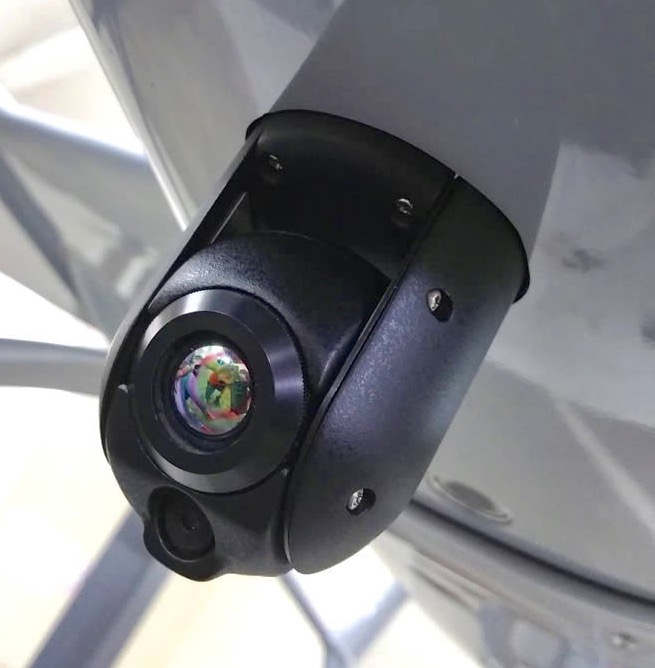
Designed for a wide range of applications, the M2D EO/IR gimbal payloads can be mounted on UAVs, drones, unmanned vehicles (including USVs and UGVs), as well as manned fixed-site installations. These gimbal payloads find utility in scenarios such as:
- Counter-drone measures
- Unmanned aerial and ground vehicle observation
- Surveillance and targeting operations
- Coastal and border patrol
- Security and defense applications
Gyro-stabilized EO/IR gimbals play a critical role in unmanned surveillance systems, enabling real-time detection, recognition, and identification of aerial, land-based, and maritime targets.
ISTAR
They are suitable for Intelligence, Surveillance, Targeting, and Reconnaissance (ISTAR) operations, counter-UAS and anti-drone defenses, as well as search and rescue missions.
Industrial
Furthermore, EO/IR gimbal payloads, cameras, and sensors are utilized in industrial inspection drones, UAVs used for mapping, surveying, aerial inspections, and environmental monitoring.

The SPI gimbal family of EOIR gimbals stands out as a robust platform with a small size, lightweight design, compact structure, high adaptability, low power dissipation, and cost-efficiency.
Notable features include ultra-sharp HD image quality, long-range zoom optics, video tracking, real-time target detection and tracking, as well as manual and auto-tracking capabilities with target locking (lock-on).
For More Information:
For further details and inquiries about the M2D Micro Gimbal, including special pricing options, we recommend contacting us directly. Our team can provide comprehensive information on how this cutting-edge technology aligns with specific needs and requirements.
Advanced capabilities, EO/IR object tracking, geo location, video compression, IP Streaming, video recording, LTE, and license plate recognition capabilities. EO/IR object tracking directs the M2D gimbal to precisely track a subject within the gimbals range, ensuring the subject of interest never leaves the view. Geo location captures the position of the M2D, its line of sight, and extracts location of observed objects with unprecedented accuracy. Video compression and IP encapsulation provides significantly low latency compression enabling long range operation. The system records high quality video with GPS metadata attached and keeps snapshots to a MicroSD card for simple access and expansion.
H1 – Human & Vehicle Detection and Classification License is offered to M7D long range gimbal system users. H1 detects and classifies humans, private vehicles and small trucks in the video. H1 will mark the detected object on the image (OSD) and will describe its type. In addition, H1 will send a report message upon detection and classification. If the image includes multiple objects, H1 will mark and report all of them.
F1 – Fire & Smoke Detection and Classification, license is offered to M7D long range gimbal system users. F1 detects and classifies fire and smoke in the video. F1 will mark the detected object on the image (OSD) and will describe its type. In addition, F1 will send a report message upon detection and classification. If the image includes multiple objects, F1 will mark and report all of them.
H2 Human Overboard Detection and Classification, license is offered for M7D long range gimbal system users. H2 detects and classifies human in water at the video. H2 will mark the detected object on the image (OSD) and will describe its type. In addition, H2 will send a report message upon detection and classification. If the image includes multiple objects, H2 will mark and report all of them
Additional capability offered by the 3 above listed features is to zoom in on the object upon detection and initiate object tracking. The System can determine the platform’s location when GPS is not available and maintain an object’s index across multiple frames.
AVAILABLE IN HD HIGH DEFINITIONTHERMAL IMAGING CHANNEL
NEW FEATURES:
H265 versus H264
H265 provides superior video compression over H264. H265 enables to use a lower bandwidth link while maintaining similar video quality.
Geo Reference
By utilizing INS data from the AutoPilot, camera IMU reports + geographic data loaded into the system pre-flight, it calculates longitude, latitude, and altitude.
Object tracking
Our systems can track a target designated by the operator, automatically adjusting the camera’s position to keep the LOS (Line of Sight) centered on the target.
Keep track of multiple targets (the LOS is centered on the main target).
License plate reading
Identify a vehicle’s license plate and display it on the OSD (On Screen Display), in addition, the information can be sent to the GCS (Ground Control Station) through a system report. License plate formats from various countries are supported, including the US and EU.
MULTIPLE ADVANCED Object Detection and Classification
Supports five different types of detectors – Human and Vehicle, Fire & Smoke, Human Overboard, Marine Vessel, and Air Craft. Users can control the detection threshold, minimizing false detections.
Upon detection, the units can automatically track the target, zoom in to the target and halt platform movement upon detection.
VIS/IR PIP DuoZoom / Fusion / Side by Side
Stream video from both EO and IR channels simultaneously. The two video streams can be displayed in the following ways: PIP (Picture in Picture), DuoZoom SBS (Side by Side), and Fusion (IR video on top of visible video – Seamless Pixel By Pixel image fuse).
Coordinate Refinement
The system can identify its location and receive more accurate geo location data. Three Dimensional
Modeling and mapping, Record metadata on pictures in a format suitable for 3D models and maps.
Docker
Run user applications on The MVP/9960 and 9965 modules by using docker containers, Rather than adding a dedicated platform processor in order to reduce weight, and power consumption
LossLess
While GPS is available, The M2D will be used in regular manner. When GPS becomes unavailable, the pair can be used to obtain camera/platform location. The unit reports the location (LAT/LON) of the gimbal/platform by analyzing the video stream against a stored orthophotograph without using GPS data.
Image Enhancement
When Image enhancement is ON, The MVP/9965 enhances the colors of a 720p video stream resulting in a more detailed image for obtaining minute subtle objects of interest.
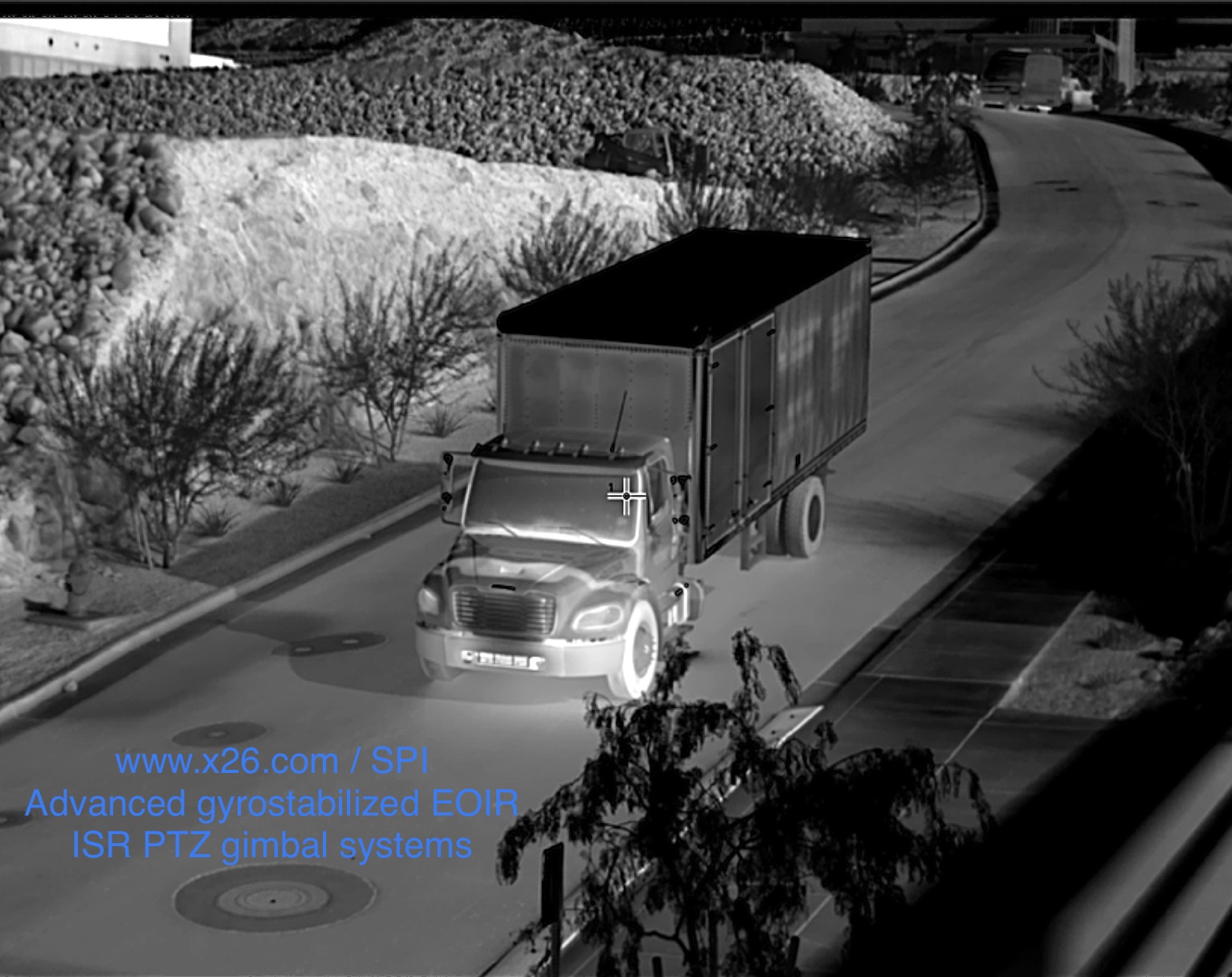
FUNCTIONS:
Pan Tilt:
Full Roll 360° Pan Full /Tilt Pitch -45° to +135°
System:
Solid state BSI CMOS/LWIR UFPA
Zoom:
Continuous Visual EO and Thermal IR
Stabilization:
UltraStab Multi-Axis/Multi-Stage rock solid Gyro Stabilization
Advanced Target Tracking:
Utilizing a highly accurate processing module, the M2-D UAV Gimbal is capable of unprecedented ground target tracking.
Digital Video Recording:
The Video recording module lets you record high-quality digital video onboard your platform direct from the M2-D UAS Gimbal.
IP Based Video Compression:
The M2-D Compression module converts the system to IP based format for easy integration into IP network platforms.
- Ultra sensitive custom 640×512 zoom thermal imaging IR Channel
- HD BSI CMOS color visible zoom EO zoom channel
- Artificial Intelligence start Tracking and enhancement algorithms
- Smooth instant Continuous zoom on both EO and IR channels
- Multi axis rock steady jitter free Gyro Stabilization Turret
- Ultra lightweight micro mini 159 gram payload
- Visible or Infrared 0.5 MRAD Laser
- Pitch -45° to 135°
- Roll -180° to +180°
- HD Auto-imaging Low-Light CMOS Sensor
New: MVP/9960 AI Module
Offers additional Advanced capabilities, EO/IR object tracking, geo location, video compression, IP Streaming, video recording, LTE, and license plate recognition capabilities. EO/IR object tracking directs the M2D gimbal to precisely track a subject within the gimbals range, ensuring the subject of interest never leaves the view. Geo location captures the position of the M2D, its line of sight, and extracts location of observed objects with unprecedented accuracy. Video compression and IP encapsulation provides significantly low latency compression enabling long range operation. The MVP9960 records high quality video with GPS metadata attached and keeps snapshots to a MicroSD card for simple access and expansion.
MVP/9960 H1 – Human & Vehicle Detection and Classification License is offered to 9960 system users. H1 detects and classifies humans, private vehicles and small trucks in the video. H1 will mark the detected object on the image (OSD) and will describe its type. In addition, H1 will send a report message upon detection and classification. If the image includes multiple objects, H1 will mark and report all of them.
MVP/9960 F1 – Fire & Smoke Detection and Classification, license is offered to 9960 system users. F1 detects and classifies fire and smoke in the video. F1 will mark the detected object on the image (OSD) and will describe its type. In addition, F1 will send a report message upon detection and classification. If the image includes multiple objects, F1 will mark and report all of them.
MVP/9960 H2 Human Overboard Detection and Classification, license is offered for 9960 system users. H2 detects and classifies human in water at the video. H2 will mark the detected object on the image (OSD) and will describe its type. In addition, H2 will send a report message upon detection and classification. If the image includes multiple objects, H2 will mark and report all of them
Additional capability offered by the 3 above listed features is to zoom in on the object upon detection and initiate object tracking.
Intelligent Advanced Modules for M2D EOIR Gimbals
MVP/9959
In addition to seamless Pixhawk integration, the MVP/9959 provides object tracking, Geo Reference, Roll De- rotation, Video compression, Video streaming over IP and Video recording.
MVS/9958
MVS/9958 is a simplified version of the MVP/9959 but lacks tracking capabilities. PixHawk Adapter
The PixHawk adapter allows seamless integration between M2D Gimbals and the PixHawk but lacks video processing capabilities and the rest of the MVP feature. The PixHawk Adapter receives RC_CHANNELS MAVLINK message from the PixHawk serial interface and converts it to camera commands (e.g., pan / roll / zoom in out / etc). Note: PixHawk adapter cannot be used together with MVP/MVS Modules
MVP/9960
The next generation of Advanced modules, The MVP/9960 supports all the features of the MVP/9959 and expands upon them. MVP/9960 is capable of License plate reading (LPR) and object detect & classification. 9960 interfaces
with all M2D Gimbals equipped with an HD interface. An internal 4G LTE modem can be integrated with the module. MVP/9965
The latest version is faster and has more processing power system can determine the platform’s location when GPS is not available and maintain an object’s index across multiple frames.
MVP MODULES FEATURES
H265 versus H264
H265 provides superior video compression over H264. H265 enables to use a lower bandwidth link while maintaining similar video quality.
Geo Reference
By utilizing INS data from the AutoPilot, camera IMU reports + geographic data loaded into the MVP 9960/9965 pre- flight, the system calculates longitude, latitude, and altitude.
Object tracking
The MVP 9959 / 9960 and 9965 can track a target designated by the operator, automatically adjusting the camera’s position to keep the LOS (Line of Sight) centered on the target.
MVP/9959 can only track a single object while the MVP 9960 and 9965 can keep track of multiple targets (the LOS is centered on the main target).
License plate reading
The MVP 9960 and 9965 can identify a vehicle’s license plate and display it on the OSD (On Screen Display), in addition, the information can be sent to the GCS (Ground Control Station) through a system report. License plate formats from various countries are supported, including the US and EU.
MULTIPLE ADVANCED Object Detection and Classification
Both The MVP 9960 and 9965 supports five different types of detectors – Human and Vehicle, Fire & Smoke, Human Overboard, Marine Vessel, and Air Craft. Users can control the detection threshold, minimizing false detections.
Upon detection, the units can automatically track the target, zoom in to the target and halt platform movement upon detection.
VIS/IR PIP DuoZoom / Fusion / Side by Side
9960/9965 can stream video from both channels simultaneously. The two video streams can be displayed in the following ways: PIP (Picture in Picture), DuoZoom SBS (Side by Side), and Fusion (IR video on top of visible video – Seamless Pixel By Pixel image fuse).
Coordinate Refinement
The MVP 9960 and 9965 can be loaded with an orthophotograph of the flight area containing precise geographic metadata. Using image processing techniques, the system can identify its location and receive more accurate geo location data.
Three Dimensional Modeling and mapping
The MVP 9960 / 9965 can record metadata on pictures in a format suitable for 3D models and maps.
Docker
User application can run on The MVP 9960 and 9965 hardware by using docker containers. Running user application on The MVP 9960 and 9965 instead of adding a dedicated platform processor reduces weight, power consumption, and results in a smaller form factor.
LossLess
While GPS is available, The M2D and MVP/9965 will be used in regular manner. When GPS becomes unavailable, the pair can be used to obtain camera/platform location. The MVP/9965 unit reports the location (LAT/LON) of the gimbal/platform by analyzing the video stream against a stored orthophotograph without using GPS data.
Image Enhancement
When Image enhancement is ON, The MVP/9965 enhances the colors of a 720p video stream resulting in a more enhanced image for obtaining minute subtle details.
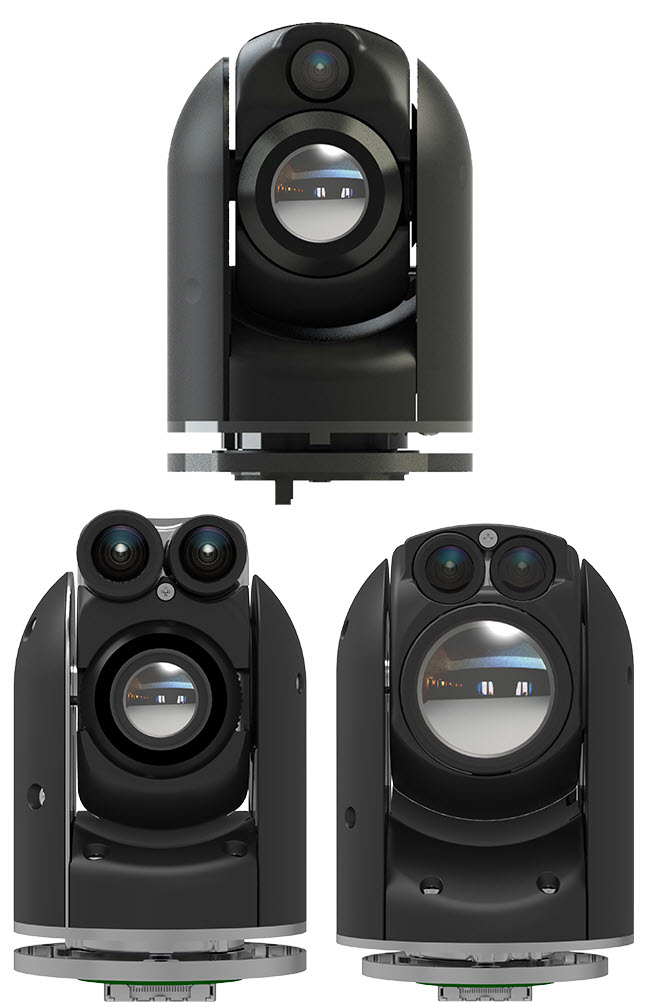
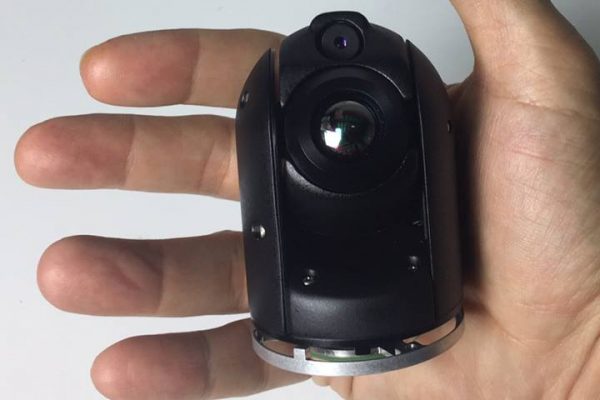
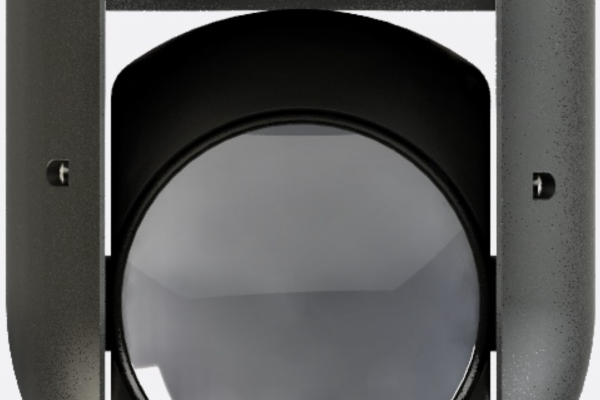
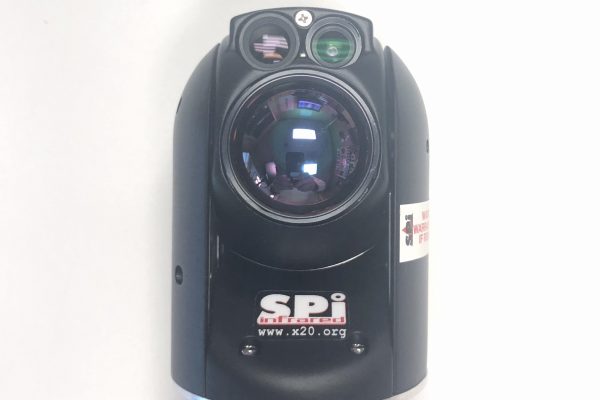
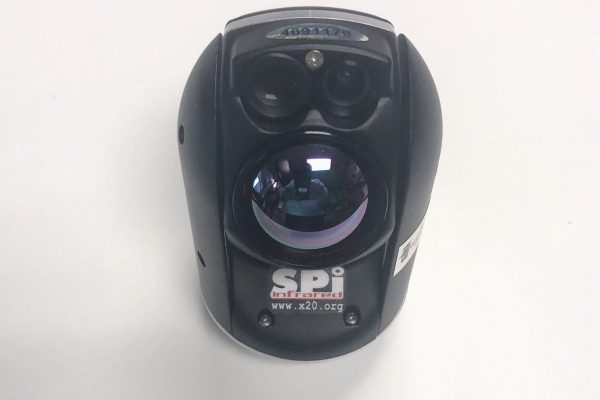
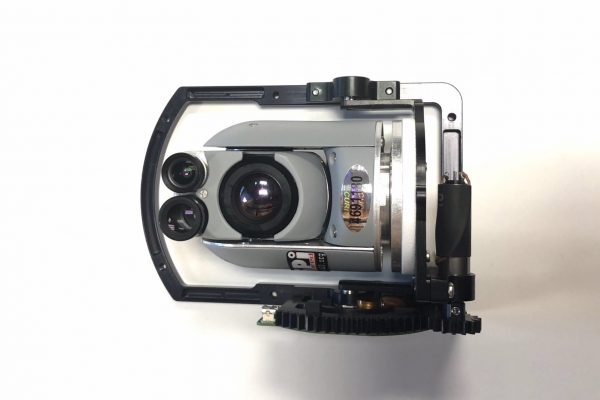
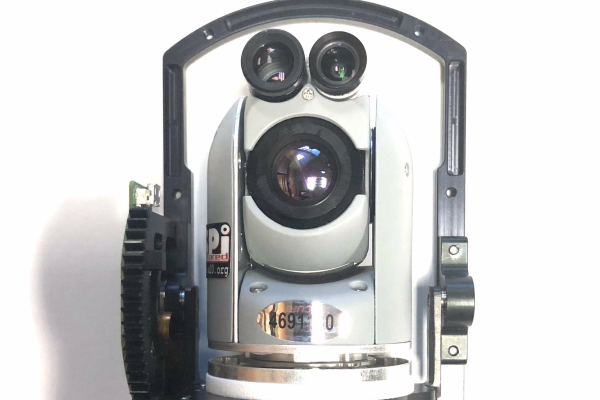
The M2D drone thermal flir gimbal gyro stabilized imaging system can easily be mounted on Quad/multi copters and platforms like the DJI Phantom UAV, The M2D Mounts
to all DJI UAV’s and All commercial and custom drones. The M2D micro mini, rugged EOIR gimbal is also ideal for short, mid, and long range zoom remote sensing applications on fixed wing and rotary aircrafts.
Background: Military unmanned vehicles UAV’s of today and tomorrow rely heavily on electro-optical EO Infrared IR sensor payloads to perform their missions.
These are the sensors that detect light in many different spectra, and enable unmanned vehicles to see. Electro-optical Infrared EOIR payloads are the sensors
that enable unmanned vehicles (UAV/UAS/DRONE) to see and avoid obstacles, detect movement, navigate accurately, find the enemy, and warn of the potential
for buried improvised explosive devices (IEDs). Designers of electro-optical Infrared Thermal EOIR – T sensor payloads for unmanned vehicles are under intense
pressure to evolve their technologies to keep pace with fast-moving trends in the unmanned vehicles industry. Perhaps in no other market are needs for ever-smaller,
lighter, and less expensive payloads as urgent as they are in the unmanned vehicles business. Small size, weight, and power consumption-known by its ubiquitous
acronym SWaP-is a paramount concern.
Unmanned systems, UAV’s Uas, Suas, Drones, Unmanned Robots, especially the airborne variety, are proliferating at an explosive rate, and demand is extending
beyond the military to more cost-sensitive industries such as law enforcement, agriculture, commercial remote sensing, traffic monitoring, and sporting events.
Put simply, a growing number of people need unmanned vehicles that are small, inexpensive, and reliable, and they need electro-optical sensor payloads to match.
Not only is there demand for ever-smaller, lighter, and less expensive electro-optical Infrared IR (thermal FLIR imaging, Thermal imaging IR Infrared Camera)
Gimbal Turret payloads, but demand for capability also is increasing.
As electro-optical and electronic component technology becomes smaller, lighter, and more affordable, payload designers sometimes have the option of choosing
between smaller size and weight, or more capability. Sometimes they strive to do both, and this presents some interesting possibilities in design tradeoffs.
Unmanned aerial vehicles (UAVs) are at the forefront of unmanned vehicle research, development, and procurement. Although no less important than
unmanned ground vehicles (UGVs) and unmanned marine vehicles, it is the UAV that is setting the agenda for unmanned electro-optical sensor payloads.
At the top of that UAV/UAS/Drone/Robot agenda is a broad trend toward large and growing numbers of relatively small UAVs that can provide local-area
and short-duration surveillance-the kinds of UAVs that can provide squad leaders a view over the next hill.
In the not-too-distant past there was a big push on developing sensor technology, and size and weight didn’t matter because DOD had large aircraft like
Global Hawk and Predator, as well as manned aircraft, hyperspectral imaging sensors are small and rugged enough to fit on relatively small UAVs.
Hyperspectral imaging is a sophisticated discipline that samples a wide variety of bandwidths in the light spectrum to provide a rich data set and detect
objects of interest not visible to single-bandwidth imaging sensors.
The key element to to reduce size and weight, that is Key!
Engineers started with a very small gimbal, and added high-definition visible-light video along with hyper spectral sensor payload.
The imperative for small size and light weight has forced mfg’s to a common material set able to withstand harsh environmental
conditions such as the stress placed on UAV takeoffs and landings. “The tarmac in the Middle East can be 120 degrees, and the payload must go to
thousands of feet a few minutes later where it is much colder,”
As electro-optical Infrared (Thermal imaging FLIR camera) drone thermal flir gimbal (EOIR FLIR) payloads for unmanned vehicles must continue to shrink in size,
the engineering challenges become heavier and force engineers to make some custom designs where years ago they would have considered only off-the-shelf solutions.
Many thermal cameras and shortwave infrared (SWIR) cameras available off the shelf are not made to withstand the physical rigors of small UAV, As a result,
Companies have been forced to evaluate the size of electro-mechanical elements of these sensors, and invest in new detector technology for electro-mechanical components
Custom design like this does not come cheaply, but electro-optical payload designers are seeking cost savings elsewhere.
The Evolution of Small lightweight affordable EOIR Thermal imaging Gimbal Turret Payloads incorporating
FLIR TV SWIR MWIR LWIR, CCD, BSTFA, Color Night vision, Cooled and Uncooled Infrared Technology will continue
To advance with the advent of smaller more efficient and sensitive detectors and lasers, The Gyro Stabilization will Get much better and smaller as well

